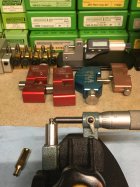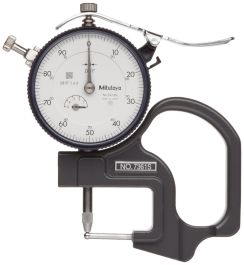And if the OP measured a feeler gauge with his ball mic and kept measuring the feeler gauge he would learn something. Meaning he would be measuring a known thickness and get the "feel" for what he was doing wrong.
I was taught to give three clicks to the ratchet for an accurate reading.
Micrometer Ratchet
Using the ratchet reduces the time it takes to use the micrometer. The ratchet incorporates a slipping clutch mechanism that prevents over-tightening and aids the user to apply a constant measuring force to the spindle, helping to ensure reliable measurements.

I was taught to give three clicks to the ratchet for an accurate reading.
Micrometer Ratchet
Using the ratchet reduces the time it takes to use the micrometer. The ratchet incorporates a slipping clutch mechanism that prevents over-tightening and aids the user to apply a constant measuring force to the spindle, helping to ensure reliable measurements.

Last edited:















